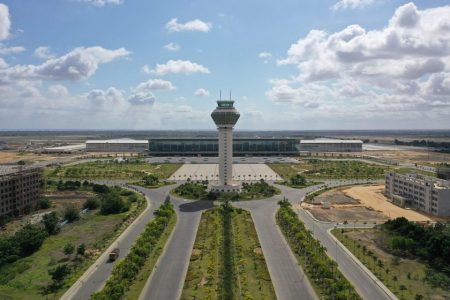Angola’s 2.4 per cent GDP forecast for 2022 is “optimistic”, considering the downside risks still presented by the Covid-19 pandemic, according to Eaglestone Securities, a financial services platform focused on Sub-Saharan Africa .
The Angolan government’s 2022 budget proposal, which was recently presented to Parliament and is likely to be approved this month, assumes that economic activity in the country will pick up significantly after a recovery of 0.2 per cent expected this year, advancing 2.4 per cent thanks to positive contributions from both the oil (1.6 per cent) and non-oil (3.1 per cent) sectors.
“We believe this forecast may be optimistic considering the downside risks still presented by the Covid-19 pandemic while remaining dependent on the speed of the vaccination process in the country,” Eaglestone said in its most recent report on Angola.
The budget proposal also assumes that oil output will improve slightly to 1.148 million bpd and crude prices will average US$59 (compared to US$67.5 this year), which the government admits is a conservative estimate.
Next year’s budget proposal amounts to AKZ18,745 billion, standing 26.8 per cent above the 2021 budget and 11.2 per cent ahead of the expected figure for this year.
The proposal assumes that the government will reach a very modest surplus of AKZ1.5 billion in 2022 following a surplus of 3 per cent expected this year and a deficit of -2.3 per cent projected in the 2021 budget.
The government expects to finance its 2022 budget by once again relying on public receipts, mainly taxes (57.2 per cent of total revenues), as opposed to debt financing.
The projected amount of debt financing is still anticipated to rise (11.3 per cent) and account for 36.7 per cent of total receipts, as higher financing in the domestic market outweighs the impact of lower overseas financing.
In terms of expenditures, nearly half of public spending is likely to be allocated to debt service payments (debt amortization plus interest).
Preliminary figures indicate that public debt declined to 84.8 per cent of GDP in September 2021, which compares with a historically high 128.7 per cent in 2020.
“This more favourable evolution is due to the impact of the primary surpluses recorded in recent years, as well as the stabilisation of the kwanza exchange rate in 2021. That said, it remains imperative for the Angolan authorities to continue to adopt measures to lower public debt levels with the aim of reaching the target of 60 per cent of GDP over the long-term,” Eaglestone said, as reported by CLBrief.
In order to reach this objective, the non-oil sector primary fiscal deficit will have to remain consistently at a level equal to or below 5 per cent of GDP until 2025, which, in the upcoming election year, the 2022 budget proposal already assumes will not happen, the consultancy added.






